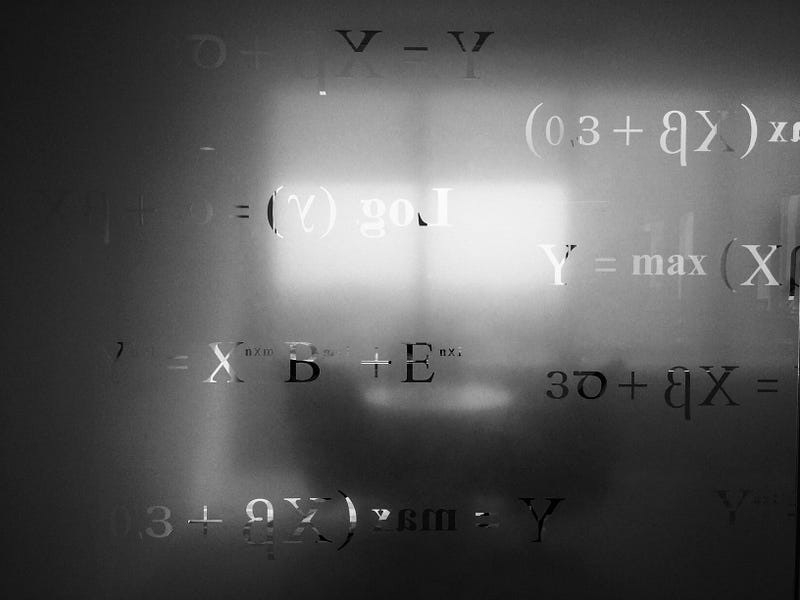Exploring the Mathematical Universe Hypothesis: A Critical Review
Written on
Chapter 1: Understanding the Mathematical Universe Hypothesis
In his 2014 publication, Our Mathematical Universe: My Quest for the Ultimate Nature of Reality, Max Tegmark introduces the Mathematical Universe Hypothesis (MUH). This concept argues that our reality can not only be accurately articulated through mathematics but is fundamentally mathematical in nature—a mathematical structure, to be precise. Tegmark proposes a Level IV multiverse, which encompasses a vast array of mathematical structures; among them exists our universe with its unique physical laws, alongside numerous other universes featuring radically different physical realities. Essentially, this implies that all conceivable universes are part of this framework.
For those interested in delving deeper into the MUH, I highly recommend Tegmark’s book. My aim here, however, is to engage with a critique presented by Peter Woit. Let’s get started!
Tegmark’s groundbreaking proposition introduces an even more ambitious concept of a “Level IV” multiverse. In the string theory landscape, one can interpret any observable physical law as a random solution arising from the equations of M-theory—whatever they may entail. Tegmark’s approach essentially applies this same vague explanatory model to the equations governing M-theory. He asserts that all mathematical structures exist, and that the equations of M-theory—or whatever governs Level II—are merely random mathematical constructs complex enough to allow for our existence. Yes, this notion is as astonishingly vacuous as it appears. Tegmark often claims that this framework avoids the need for free parameters.
While the MUH can be described in numerous ways, it’s perplexing to label a hypothesis that asserts the existence of all possible universes as “astonishingly vacuous.” I struggle to comprehend how an idea could be more profound than this.
The portion of Tegmark’s book addressing the issue of testability is quite limited, found towards the conclusion of Chapter 12. His summary in this chapter asserts:
The Mathematical Universe Hypothesis is fundamentally testable and falsifiable.
This assertion regarding falsifiability appears to hinge on the last page of the chapter, which discusses “The Mathematical Regularity Prediction,” positing that:
Physics research will reveal additional mathematical regularities in nature.
This prediction pertains not exclusively to the Level IV multiverse, but also to the notion that our physical laws are intrinsically mathematical. The discovery of further mathematical regularities in nature does support the idea that our physical laws are based on mathematics; however, it also aligns with the Level IV multiverse theory. If we were to uncover a natural phenomenon devoid of mathematical characteristics, it would effectively disprove the MUH. Thus, the MUH anticipates the discovery of more mathematical regularities.
As a side note, it’s important to recognize that various predictions can arise from different theories or hypotheses. For instance, both Newtonian mechanics and Special Relativity predict that if you walk at 5 km/h on a train moving at 90 km/h, your speed relative to the ground would be 90 + 5 = 95 km/h. However, they diverge in their predictions concerning speeds approaching the speed of light. If it were demonstrated that you were only traveling at 92 km/h relative to the ground, this would disprove both Newtonian mechanics and Special Relativity.
Woit’s critique contains much more content, but this overview captures the main points I wished to address. Thank you for reading!
In this video, Max Tegmark explores his concept of the Mathematical Universe, discussing the profound implications of viewing reality through a mathematical lens.
Chapter 2: The Question of Falsifiability in MUH
This video delves into whether our universe can be described mathematically, examining the philosophical and scientific ramifications of this idea.
Section 2.1: The Importance of Mathematical Predictions
The relevance of mathematical predictions in physics cannot be overstated. They serve as a foundational aspect of scientific inquiry, guiding researchers in their exploration of the universe.
Subsection 2.1.1: Historical Context and Future Implications
